#valemon: the polar bear king
Explore tagged Tumblr posts
Text
youtube
Trailer to the upcoming Norwegian animated feature Kvitebjørn - Østenfor sol og vestenfor måne (2024).
#kvitebjørn: østenfor sol og vestenfor måne#valemon: the polar bear king#the polar bear king: east of the sun and west of the moon#east of the sun and west of the moon#white bear king valemon#kvitebjørn
15 notes
·
View notes
Text
Another shot from The Polar Bear King! This scene got divided between me and another (really skilled) animator, and I got the later half! And I have to say I was really excited about it, it's such a cute moment between the two protagonists! ❤️
621 notes
·
View notes
Text
Zwerg Nase (2021) has this, sort of. It's been a while since I last saw it, but I remember thinking that in some places it felt like a Disney movie.
I think even some Norwegian and Swedish critics at the time thought that Kvitebjørn Kong Valemon (1991) had a "Disney aesthetic".
Somebody recently said that the Peau d'Âne of Jacques Demy, aka the 1970 Donkey Skin, was their favorite fairytale movie outside of the Disney ones, and that Disney would never adapt Donkey-skin. It is funny because the whole purpose of this movie was to BE a Disney movie.
I posted several times about this movie before, and one of the big things with Demy's creation is that he purposefully embraced and imitated the codes and visuals of the Disney fairytale movies of the time (Snow White, Sleeping Beauty, Cinderella, etc...). He wanted to create a live-action Disney movie, he wanted to make the "Disney movie Disney would never make". Of course there were other influences (the hippie and psychedelic aesthetic of 60s America, the Gustave Doré illustrations of Perrault, the surrealist movement) but Disney was one of the core ones (alongside Cocteau's Beauty and the Beast).
And this made me wonder something... Are there other live-action fairytale movies that purposefully tried to embrace a Disney aesthetic? We know about Disney homages or imitators or rip-offs in the animated world, but in the live-action world? I am pretty sure Demy's Donkey Skin is the only movie I heard of that purposefully tried to embrace a Disney aesthetic. But it can't have been the only one right?
Weren't there other "Disney live-action fairytale" movies before Disney actually made live-action fairytale movies? Probably in other European countries cinema history...
#peau d'âne#peau d'ane#donkey skin#zwerg nase#dwarf nose#the dwarf long nose#märchenperlen#isbjörnskungen#kvitebjørn kong valemon#white bear king valemon#kvitebjorn kong valemon#the polar bear king#east of the sun and west of the moon#der eisb��rkönig#cinderella#snow white#snow white and the seven dwarfs#disney#sleeping beauty#the sleeping beauty#beauty and the beast#la belle et la bete#la belle et la bête
44 notes
·
View notes
Text




🌹🌞The Bear King's Wife🌜🥀
I'm releasing my inner furry powers to draw the most handsome, greenflag polar bear king ever 😤🔥
Art for my reimagening of the fairytales Kvitebjørn Kong Valemon and East of the Sun, West of the Moon which I've dreamed of doing for the past 12+ years ��💖
#monster boyfriend#monster romance#monster lover#romance art#fantasy romance#terato tag#fantasy art#vesprynna art#digital art#kvitebjørn kong valemon#Valemon and Irynja#sfw furry#furry art#furry oc#originalcharacters
42 notes
·
View notes
Text
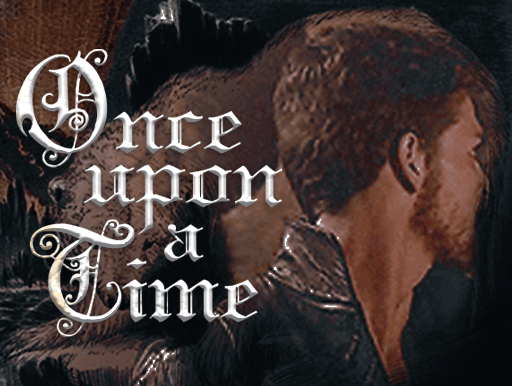

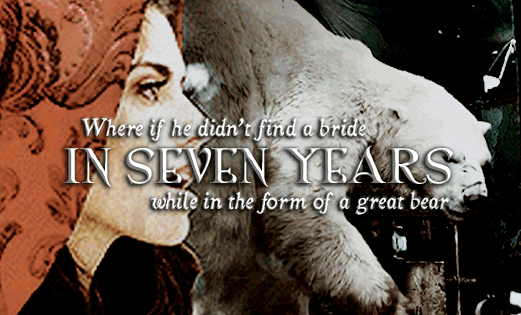
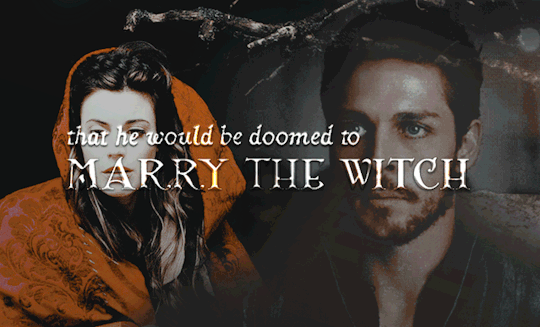
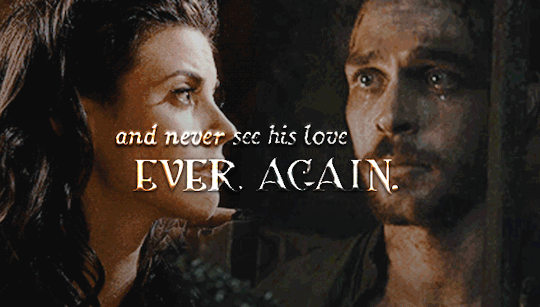
OUAT OC: Lorian Valemon/Lewis Beorn
“Once when she was in the wood, she set her eyes upon a white bear, who had the very golden wreath she had dreamt of between his paws.”
Wade Briggs as The Polar Bear King, Lorian Valemon / local Storybrooke carpenter, Lewis Beorn
#ouat oc#lorian valemon/lewis beorn#lorian x red#my edit#ouat ocs#once upon a time oc#fyeahonceuponatimeocs
24 notes
·
View notes
Text

Christmas card for the production I've been working on : Valemon, the polar bear king.
#character design#drawing#charadesign#illustration#procreate#christmas#christmas cards#polar bear#art commissions#fan art#artwork#artists on tumblr#digital art#drawings
2 notes
·
View notes
Text
Alright, here comes some suggestions…
Based on the fairy tale:
La belle et la bête (live action; 1946) Belle to Kaijuu Ouji (puppet animation; 1976) Beauty and the Beast (live action; 1976) Die Schöne und das Tier (puppet animation; 1976) Panna a netvor (live action; 1978) Skønheden og dyret (puppet animation; 1989) Die Schöne und das Biest (live action; 2012) La belle et la bête (live action; 2014)
Based on fairy tales similar to Beauty and the Beast:
Der Prinz hinter den sieben Meeren (live action; 1982) Kvitebjørn kong Valemon (live action; 1991)
Inspired by the fairy tale:
Meridian: Kiss of the Beast (live action; 1990) - Be aware, though… It's not a good movie!
So like, does anyone have any good Beauty and the Beast type movies to recommend? I've seen all four Disney movies (the original, the two DVD sequels, and the live-action remake), Belle (the anime), Blood of Beasts (a low budget Viking movie), Beauty and the Beast (the series starring Ron Perlman and Linda Hamilton), I am Dragon (a Russian movie about a dragon), The Shape of Water (the Del Toro movie that everyone needs to watch at least once in their life), Penelope (Christina Ricci movie where the girl is actually the 'beast'), Corpse Bride (the stop motion musical about a dead woman trying to marry a living man), Warm Bodies (Zombie!Romeo x Survivor!Juliet), Edward Scissorhands (needs no introduction), Bram Stoker's Dracula (the sexy one with Gary Oldman), the Shrek quadrilogy (even if only the first one really fits the mold), and I'm going to include TAU on this list (a movie about a kidnapped girl, a sadistic scientist, and a tortured AI) because you can't convince me that it wasn't a love story.
I love Beauty and the Beast and stories that are similar, so any recommendations are appreciated.
(Also, if you want to count Phantom of the Opera as a Beauty and the Beast story, I've seen the 1943 version, the Robert Englund version, half of the Julian Sands version (it was really bad), and the Gerard Butler musical version.)
#la belle et la bete#la belle et la bête#beauty and the beast#die schöne und das biest#märchenperlen#belle to kaijuu ouji#die schöne und das tier#panna a netvor#skønheden og dyret#der prinz hinter den sieben meeren#the prince beyond the seven seas#lily and the lion#the lady and the lion#the singing springing lark#the singing soaring lark#isbjörnskungen#kvitebjørn kong valemon#white bear king valemon#kvitebjorn kong valemon#the polar bear king#east of the sun and west of the moon#der eisbärkönig#meridian#meridian: kiss of the beast
27 notes
·
View notes
Text

I draw Princess Serenity and Prince Endymion from Sailor Moon. This is based on my friend fanfic story The Polar Bear King that is a Sailor Moon version of it. Serenity and Endymion are playing the roles of the Princess and King Valemon in his polar bear form from The Polar Bear King 1991. This is the cover art that I made for her. She’s one of my friends on deviantart. If want to please feel free to check out her drawings. The link to her profile is down below:
P.S. planning to make this into a comic later on in the future someday too. :)
The Polar Bear King belongs to Ola Solum, Peter Christian Asbjornsen, and Jorgen Moe. :)
Sailor Moon belongs to Naoko Takechui. :)
I only own the artwork. :)
If you want to please feel free to check me out on my other socials.Here is the link to my linktree that has all of my socials together: https://linktr.ee/SailorMoonFanGirl
0 notes
Photo







The Polar Bear King / Kvitebjørn Kong Valemon (1991)
#The Polar Bear King#The Polar Bear King 1991#East of The Sun West of The Moon#Kvitebjorn Kong Valemon#Fairytales#My GIFs#White Bear King Valemon
174 notes
·
View notes
Photo

Norway.
#Winter#Norway#The Polar Bear King#Kvitebjorn Kong Valemon#East of The Sun West of The Moon#Fairytales
110 notes
·
View notes
Text
I will never not reblog Theodor Kittelsen. His illustrations for fairy tales, including the one above from the tale of Kvitebjørn kong Valemon "king Valemon, the white/polar bear", shaped the very image that still lingers in the public eye today.
Personally I think his greatest work is Svartedauden, a book about the black death. The poems and stories are bleak, but the beautiful black and white illustrations hold such a wonderful heft to them. Similar nature scenes as seen in his fairy tale paintings laid bare and desolate, left to rats and ruination, sometimes seen from the perspectives of children. An all-round beautiful, if not somber reading experience, and stark contrast to both his other illustrations of folk tales, and the fairy tale genre as a whole, as they were often sanitized.
Tldr: check out Kittelsen, you cowards.
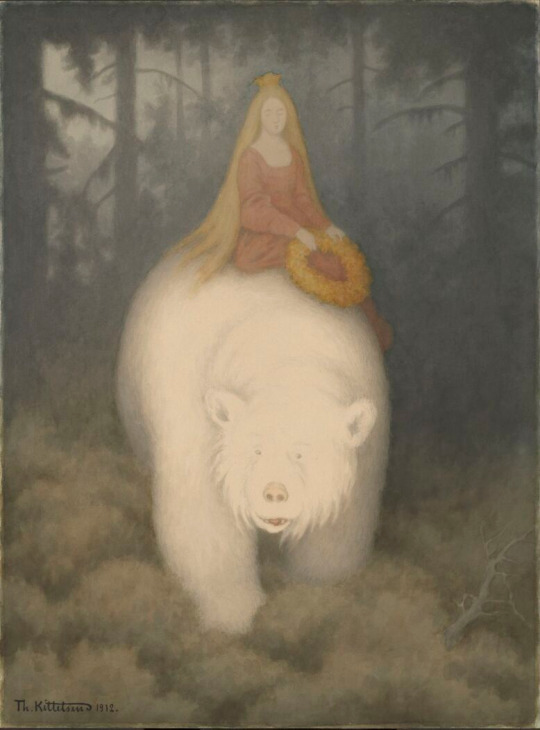
My bear! She sang. My bear so fair! And off they went, from here to there, The bear, the bear, and the maiden fair.
Theodor Kittelsen//lyrics from the Bear and the Maiden Fair
#theodor kittelsen#short art rant#not asoiaf this time sorry#literally any sighting of norwegian art with literary or historical value is like my undercover spy activation code
27 notes
·
View notes
Text
youtube
Kristine Kujath Thorp - Flaske, duk og saks
#kvitebjørn: østenfor sol og vestenfor måne#valemon: the polar bear king#the polar bear king: east of the sun and west of the moon#east of the sun and west of the moon#white bear king valemon#kvitebjørn#music#odd nordstoga#kristine kujath thorp
6 notes
·
View notes
Photo
One of the better Nordic fairytale movies. :)








The Polar Bear King (1991)
#the polar bear king#isbjörnskungen#kvitebjorn kong valemon#kvitebjørn kong valemon#der eisbärkönig#white bear king valemon#east of the sun and west of the moon
373 notes
·
View notes
Photo
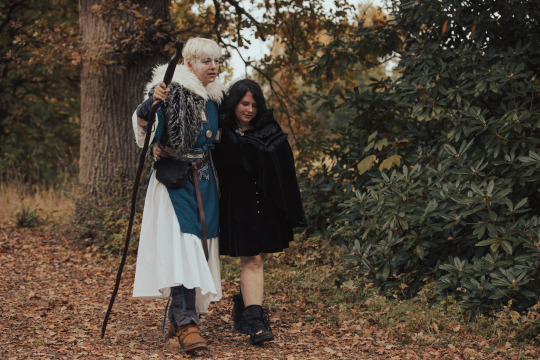


Last October I played the character Valemon at the Victorian fae gathering LARP A Harvest Dance.
Valemon is a character from a Norwegian fairy tale: a king cursed to be a polar bear. They were an old, wise, protective, and empathetic creature, making sure no mortal would accidentally wander through the Veil into the Fae realm. On the other hand, they were secretive, sad, bitter, and stuck in their ways. It’s hard to teach an old bear new tricks.
During the Harvest Dance, Valemon did their best to protect their child Alvar. No one, not even Alvar, knew that they were Valemon’s human child, and Valemon did everything in their might to keep that a secret. Who knows what those other fae would say or do if they found out...?
I learnt everything about this character three days before the game. A player had dropped out last-minute and I got to fill in for them. The costume was almost completely provided by the organizers and they helped me to get familiar with the character.
This was one of the most intense LARPs I've ever played, and honestly, I've still not completely recovered from all the torment and grief this character went through. It was an absolute honor though, and polar bears are now a new favorite animal of mine.
A Harvest Dance is a LARP by Poltergeist LARP
The pictures were taken by It’s Tsesi
My other Harvest Dance characters
78 notes
·
View notes
Text
The Ultimate Fables Catalogue (C)
I know, I know, I haven’t released part “B” yet. But as it turns out, I finished the part C long before the part B, so I will release this one first.
In this continuation of the “Ultimate Fables Catalogue”, I will cover a part of the spin-offs. To be precise I will take a look at the two Cinderella spin-offs (Cinderella: From Fabletown, with love ; and its sequel Cinderella: Fables are Forever), and the entirety of the Fairest series (including its graphic novel, Fairest: In All the Land).
SPOILERS AHEAD! SPOILERS AHEAD!
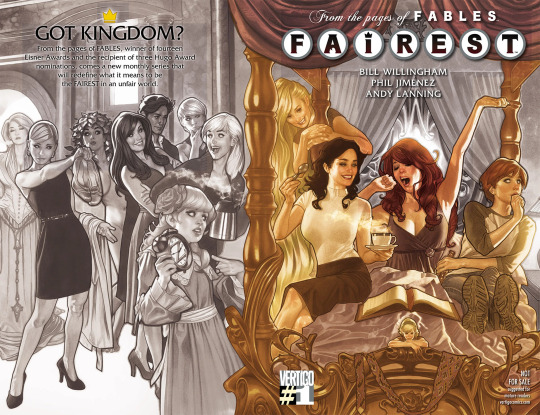
The Cinderella spin-offs
Cinderella: From Fabletown, with love
# The title of the series is an homage to the James Bond novel “From Russia, with love”. Cinderella’s own adventures as Fabletown’s spy evoke those of James Bond and of the Bond girls. The writer of this series, Chris Roberson, evoked the two main influences of the plot by describing the comic as “On Her Majesty’s Secret Service meets Sex and the City”.
# Crispin Cordwainer is the shoemaker from the Grimm fairytale “The Elves and the Shoemaker”. His name comes from saint Crispin, patron of cobblers and leather-workers.
# Cinderella mentions “an ogre and a talking cat”, referencing Charles Perrault’s “Puss in Boots”.
# Among the magical items found among the Mundies, Beast mentions the “seven-league boots” (from Charles Perrault’s Little Thumbling), a “horn of plenty” (the Cornucopia), a magical flute (I don’t have any specific reference for this one) and a “singing sword” (I don’t have any clear reference, though the “singing sword” concept appears here and there - it is the name of an Arthurian novel by Jack Whyte, and an episode of the cartoon “The Legend of Prince Valiant”, among many other things).
# The silhouette of the tourists are seen, and while we already know of Mowgli and Cinderella, we will discover the other two to be Feathertop (see later) and the... what was originally planned to be the Huntsman and then became a Woodsman apparently (it is one of those unclear points). Cinderella in turn has her group of three spies: Puss in Boots (who likes to be known as the “Marquis of Carabas”), from Charles Perrault’s fairytale of the same name ; Dickory, the mouse that ran up the clock, from the nursery rhyme Hickory Dickory Dock, and finally Jenny Wren, whose lover Robin Redbreast was murdered - from the cycle of nursery rhymes surrounding Cock Robin (”Cock Robin Got Up Early ; Who killed Cock Robin? ; Jenny Wren Fell Sick).
# Aladdin, and the djinn of the ring, are both from the “Aladdin” story of the One Thousand and One Nights. I suspect his driver, Farid, to be the prince Farid from the One Thousand and One Nights story “Farizad of the Rose’s Smile” - given it is the only Farid character in the Arabian Nights I know of.
# The ghuls are creatures of Arabian folklore.
# Ultima Thule (named after the legendary island of Thule that cartographers of Antiquity believed to exist north of England) is the realm of Scandinavian fairytales, especially Norwegian, filled with trolls and talking polar bears and giant elks. Its former ruler was king Valemon, from the fairytale “White-Bear-King-Valemon”. Other inhabitants of Thule include the widow Gudbrand (wife of Gudbrand from “Gudbrand on the Hill-Side”), Askelädden (the famous Norwegian folktale character known as “Ashlad” in English), Little Freddy (from “Little Freddy with his fiddle”), Little Annie the goose-girl (from the fairytale of the same name), Butterball (from the Norwegian fairytale of the same name), as well as the ram and the pig, from “The Ram and the Pig who went to live in the woods by themselves”.
# The Fairy Godmother is here another “archetype character” in the likes of Frau Totenkinder, Prince Charming or Jack of All Tales. She was the fairy godmother of Cinderella, but also alongside her sisters the “good fairies” of the Briar Rose/Sleeping Beauty fairytale, and she secretly worked to help Rapunzel by sending the prince rescue her. The Fairy Godmother’s perpetual fight against Frau Totenkinder has notably been the source of numerous of the fairytales: it seems to have started out by Frau Totenkinder “ruining” the fate of Briar Rose by playing the role of the “wicked fairy/angered wise woman” in the tale, only for the Fairy Godmother to retaliate by sending the prince of Rapunzel (whose witch-adoptive motive was Frau Totenkinder). The evolution of her role throughout the fairy tales is also explained by this perpetual duel: after sending Prince Charming to save Briar Rose from Frau Totenkinder’s curse, the witch fought back by killing the Fairy Godmother’s two sisters with poisoned apples (evoking Snow-White), which is why she was alone when helping Cinderella ; and the reason her spells only last to midnight is because her powers were weakened due to her actions in the Rapunzel story, all of her efforts exhausting her spells so that they could only work for a day and no more. It is also confirmed that the prince of Rapunzel is NOT prince Charming, as the Fairy Godmother “reused” the same prince to save both Briar Rose and Cinderella.
The Fairy Godmother is also very clearly an homage, or rather a dark parody, of the fairy godmothers of Disney movies. Her being part of a trio of benevolent fairies looking like little grandmothers at the times of Briar Rose’s birth is a nod to Fauna, Flora and Merryweather, the three fairy godmothers of Disney’s Sleeping Beauty, while her being the kind, elderly, grey-haired, plump godmother of Cinderella is an obvious nod to Disney’s interpretation of the fairy godmother of Cinderella.
# The palace being made of glass is of course a nod to the glass slippers of “Cinderella”, but I wonder if it isn’t a reference to the Norwegian fairytale “The Princess on the Glass-Hill”, or something similar...
Cinderella: Fables Are Forever
# The title of the series is again a James Bond reference, this time to “Diamonds are forever”.
# The “Shadow Fabletown”, the Soviet community of Fables living beyond the Iron Curtain and opposing the American Fabletown, is composed of Ivan Durak (Ivan the Fool, a folk character of Russian fairytales), Tugarin Zmeyevich (the Slavic character known as Tugarin or Zmey Tugarin), Meng Chiang-Nu (the character of the Chinese folktale Lady Meng Jiang), the Seven Chinese Brothers (see below), and Anansi the spider (a folkloric character from West African tales and legends)
About Tugarin Zmeyevich, the Fables Encyclopedia explains a bit more the process behind choosing this character that turns into a dragon: they explain Tugarin Zmeyevich started out as the antagonist of a folktale where he was opposed to the Rusian folkloric hero Alyosha Popovich - and in the oldest/”first” version of this folktale Tugarin Zmeyevich was “merely” a man as tall as a giant, riding a horse that had fire coming out of its nostrils and smoke from its ears. However, throughout adaptations and expansions of the tale, Zmeyevich inherited the “breathe fire and smoke” traits of his horse, and then from a fire-breathing man became a dragon. So, for the Fables comics, they decided to have Zmeyevich look like a man at first, but be able to turn into a dragon at will.
As for the Seven Chinese Brothers, the Fables Encyclopedia also brings more information: they are actually part of a popular Chinese folktale merely known as “The Five Brothers” - which became well-known in the West thanks to Claire Huchet Bishop’s “Five Chinese Brothers” in the 30s ; but there are several variations of the story where the number of brothers change, up to seven or ten. And the idea of the five brothers being actually seven was also popularized in the English-speaking world thanks to Margaret Mahy’s “Seven Chinese Brothers” at the end of the 19th century.
# Dorothy Gale, aka “Silverslipper” is from “The Wonderful Wizard of Oz”, by L. Frank Baum. Beyond her first nickname (evoking the magical “silver slippers” of the book), she is also called “The wicked bitch of the east” (a nod to the Wicked Witch of the East from the book). Numerous other characters and entities from the Oz books appear: the Tin Woodman and the Cowardly Lion (from “The Wonderful Wizard of Oz”), the Chiss, Bungle the Glass Cat (”The Patchwork Girl of Oz”) and the Spoon Brigade (”The Emerald City of Oz”). We also see in the flashbacks all four witches of Oz (Good witches of the North and South, Wicked witches of the East and West), alongside the Munchkins and the Scarecrow.
# Other pop culture references include the line “Cheshire cat got your tongue” (referencing “Alice in Wonderland”), “Are you done quoting Donny and Marie?” (the television series of the same name) and Cindy describing the relationship of Bigby and Snow White as “That whole Cheers things”, paralleling the couple with the characters of Sam and Diane from the “Cheers” show
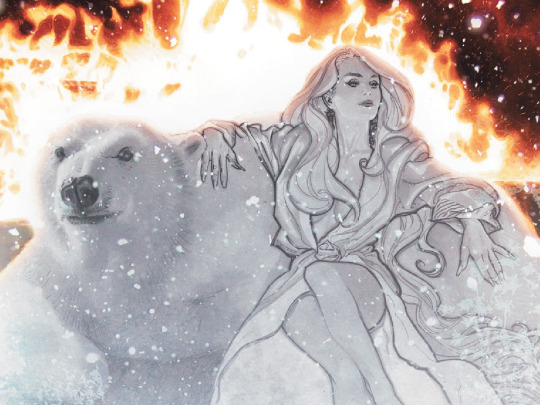
FAIREST
Wide Awake
# The main character is Ali Baba, from the One Thousand and One Nights story “Ali Baba and the Forty Thieves”. Morgiana of the same story is briefly mentionned in flashbacks. Interestingly, in the Fables universe Ali Baba went from a thief killer to the “prince of thieves” himself, something pointed out as weird in-universe. I believe it is a reference to how in American culture at the time of the comic’s release, the name of Ali Baba was so strongly associated with thieves you often saw it being reused for a thief character.
# The many modern USA culture references made by the Bottle Imp are too many for me to record them all.
# The fact of having the two “Sleeping Beauties” be a red-clad Briar Rose and the white Snow Queen isn’t just some fancy aesthetic choice. This plays on a common duality in fairytales between white and red that the comics itself already illustrated throughout the duo of Snow-White and Rose-Red. More interestingly, Ali Baba describing one as “the color of winter snow” and the other with “the color and heat of the first days of autumn” seems to be a play on the “seasonal” reading of the fairytale “Sleeping Beauty”, this analysis and belief that the fairytale actually depicts a metaphor for the cycle of seasons, Sleeping Beauty herself embodying nature falling asleep during the winter, and her awakening symbolizing spring.
# The version of Sleeping Beauty’s backstory here is quite interesting because it clashes with the one presented by the Cinderella spin-offs - a “retcon” here that is present inside the main series itself, since it began with the implications that Frau Totenkinder was the one who cast the curse, being the “evil witch” against the “three good fairies” (a la Disney), but then switched to make this new backstory canon. In this version of the story, we are more faithful to Charles Perrault’s version of the tale, since we have seven fairies gifting the child and the evil fairy being the eighth. The fairies here are actually a mix between the actual “fairytale fairies”, as in French fairytale fairies, and British fairies of folklore and legends. The seven gifts here are as such: beauty (for Katrya the Pure), wit (for Sofiya the wise - though it is the “wit of an angel”, so it is actually naivity), elegance/grace for Nyura the Graceful (which is extended to being graceful and elegant in all things... including the bedroom), walth for Ionna the Gifted, the talent of singing for Alyas the Noble (though it is “singing like a nightingale”, quite literaly, so singing like a bird), the talent of writing good songs and playing music perfectly for Yeva the Lively. The last gift of not dying but falling into an eternal sleep is given by Leysa the Defender against the curse of the evil fairy, Hadeon the Destroyer - and here, as with all magic process, we receive an explanation for the why: as it turns out, Leysa could only “split” the death curse across so many people the death became a��“mere” endless sleep.
Beyond this, each of the fairy embodies a specific concept associated with fairies in general, or magic beings. Katrya the Pure is focused on purity and chastity (since her magical waters heal all knights chaste and noble) ; Sofiya the Wise is noted to have written a very famous grimoire ; Ionna the Gifted represents the “benevolent” fairies associated with darkness, since she is a daughter of the night who tames and traps nightmares (as opposed to Hadeon the Destroyer who is an “evil” fairy of darkness, shadow and fogs that rules over a typical “evil, nightmarish forest”), Yeva is strongly associated with music, merriment and parties, etc... The habit of Hadeon of turning her former lovers into objects she uses later (like into a boat) is also a very typical trope of fairy tales.
# In a flashback, Ali Baba is seen stealing from Abd al Quadir. He is a character from the One Thousand and One Nights story “Ala al-Din Abu al-Samat” (253rd night).
Lamia
# Lamia is of course the legendary monster/bogey-woman of Greco-Roman culture.
# Saint George, his sword Ascalon and the village of Silene are from the legend of “Saint George and the Dragon”. Saint George seems to embody here the archetype of the “dragon slayer-hero” since he lists other famous dragons among his list of kills: the Chimaera (not an actual dragon, but the fire-breathing Chimera of Greek mythology, killed by the hero Bellerophon), Illuyanka (a Hittite dragon killed by the god Tarhunz), Tiamat (the Mesopotamian goddess-dragon killed by Marduk) and finally Vritra (the Indian reptilian demon slain by the god Indra).
# When Beast lists the various fictional characters he becomes “like” during his various hunts for the Lamia, he mentions in order Auguste Dupin (created by Edgar Allan Poe), Sherlock Holmes (created by Arthur Conan Dole), Hercule Poirot (created by Agatha Christie), Sam Spade (from “The Maltese Falcon”) and Philip Marlowe (created by Raymond Chandler).
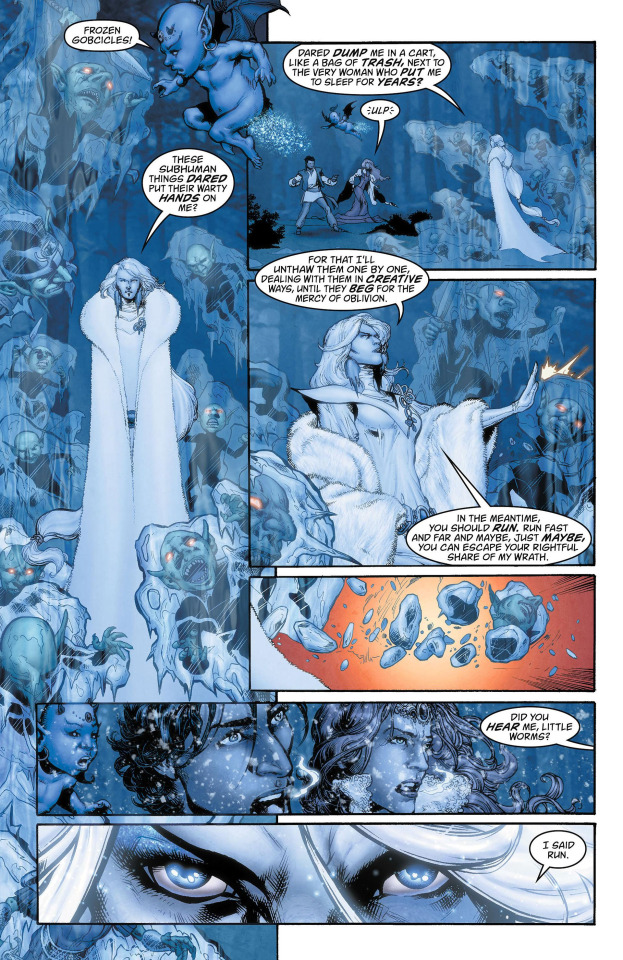
The Hidden Kingdom
# The three movies seen at the theater at the beginning are “Bunny Lake is Missing” ; “Don’t Look Now” and “Picnic at Hanging Rock”. Rapunzel later compares the flying origami attack to Alfred Hitchcock’s “The Birds”.
# This is I think the first time paintings are hidden around in the background. In Rapunzel’s flat there are two pictures on the walls: one is the poster for Kubrick’s “Clockwork Orange”, another is a reproduction of “The Lady of Shalott” by Waterhouse. Frau Totenkinder rather has in her flat Fuseli’s “The Three Witches”.
# Frau Totenkinder here appears mostly in her role of “the witch/adoptive-mother of Rapunzel”. Interestingly however, while Totenkinder is the witch that locked Rapunzel in a tower, and banished her after she slept with the prince, in the Fables continuity of the role of the witch in the Grimm fairytale got split with... the Fairy Godmother, who is revealed to have been the one preventing Rapunzel’s prince from returning to her.
# In the Japanese realm of Fables, the main characters include Mayumi (who is the Kuchisake-onna of Japanese ghost stories), Tomoko (a kitsune), a bakeneko (that just goes by “Neko”) and Katagiri (a kappa). Other supernatural beings coming from “The Hidden Kingdom”, the Japanese Homeland, include: funayûrey (ghosts of the drowned at sea), tanukis, a noppera-bo, a rokurokubi, an oni, an hitotsume-kozo, several kirin...
# When Neko first appears to Rapunzel, he imitates Totoro, from “My Neighbor Totoro”.
# Rapunzel briefly prays to the Jizo Bosatsu.
# Rapunzel, in her numerous travels throughout the Homelands searching for her missing babies, adopted several different identities. In the Hidden Kingdom she was Okiku, the famous Japanese “ghost” in the well. In the Ancient Greece equivalent in the Homelands she also played the role of Theseus, by slaying the Minotaur. And she is noted to have assisted to the “birth of an empire” by seeing twins by a she-wolf: they are Romulus and Remus, the legendary founders of the Roman Empire.
# The treacherous shogun Ryogan actually fulfills the role of both the jealous samurai who mutilated the Kuchisake-onna and the samurai that killed Okiku.
# When the Hyakki Yagyo, the “Night Parade of the One Hundred Demons” is invoked, we also see among the numerous yokai tengus, chochin’obakes, an hebi, the wanyudo, and a nue.
# Jack ends up thrown into the claws of the famous Japanese movie monster, Gdozilla.
# Lauren Beukes, the writer of this arc, listed her several inspirations as: the manga Tekkonkintreet, “The Pillow Book” ; the movies of Kurosawa, Miyazaki and Miike ; the work of the three Murakami (Haruki Murakami, Ryu Murakami and Takashi Murakami) ; “The Tale of Genji”, “Tokyo Vice” (no, not the television series, but the memoir of Jake Adelstein), and “The Illustrated Night Parade of the Hundred Demons”.
Aldered States
# The various suitors of Princess Alder include Mr. Pickles (from “The Magic Fishbone” by Charles Dickens), Trotty Veck (from “The Chimes” by Charles Dickens) as well as Farmer Giles (from Tokkien’s “Farmer Giles of Ham”).
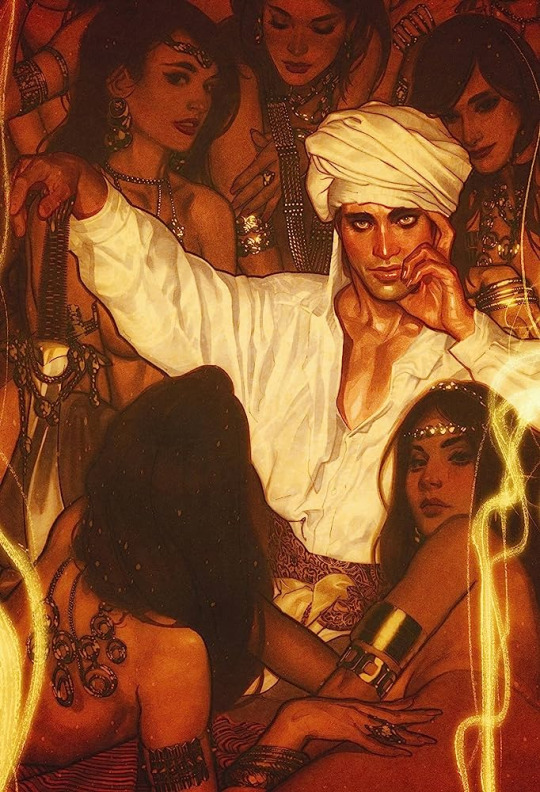
The Return of the Maharaja
# Nalayani is actually the past life of Draupadi, from the Indian epic “Mahabharata”.
# There is a LOT of characters from Rudyard Kipling’s The Jungle Book here: Tabaqui the jackal ; the dholes ; Nathoo ; Buldeo ; Pudmini...
# Prince Charming makes a reference to the “golden ticket”, from Charlie and the Chocolate Factory.
# Among beings from Indian folklore, beliefs, folktales and Hindu mythology/religion we have the asuras, the pishachas, as well as a host of Hindu gods - Rama, Ganesha, Manasa, Kamadhenu, Nandini... The Trishula trident is also important for the ending of the story.
Of Men and Mice
# The very title is a reference to the story “Of Mice and Men” by John Steinbeck.
# The cubs are being read one of the Harry Potter books - Harry Potter and the Chamber of Secrets to be precise.
# At Cinderella’s ball, the transformed mouse ends up seducing Lady Isabelle du Lac, daughter of Lord and Lady du Lac. I wonder if it is a reference to Edmund Dulac...
# I also believe the giant sentient humanoid rat-ninjas might be a reference to “Teenage Mutant Ninja Turtles”.
# The “King’s men” are the same from the nursery rhyme “Humpty Dumpty”.
# Rama is the divine hero of Hindu mythology/religion, while Varuna is... I am a bit confused because to my knowledge Varuna is an Hindu god, not a tiger-headed fish... The only tiger-headed fish I know of is the Japanese Shachihoko... This leaves me confused.
# The Rodgers and Hammerstein’s version of Cinderella is explicitely referenced here.
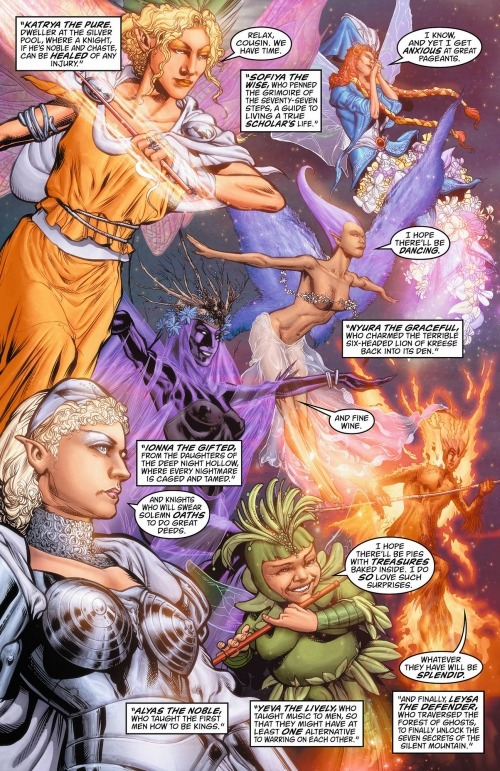
Clamour for Glamour
# Lady Maeve of Dunhollow seems to be Maeve/Mebd of Irish mythology.
# Mary, after losing her little lamb, took up gardening - and thus became the Mary from the nursery rhyme “Mary, Mary, Quite Contrary”.
# There is an entire section of the Farm called André’s Garden, where the Mean Sunflower Kid/Mister Sunflower lives, and we see here five other Fables living in this area: Snapdragon, Old Maid Hollyhock, the Dormouse Juggler, Alderman Poppy, and a woodpecker. Given this is the living area of the Sunflower, and named “André’s garden” I am pretty sure they are meant to be part of this same Victorian book of nursery rhymes written and illustrated by R. André/R. Andre from which the nursery rhyme “Mister Sunflower” comes. The problem is that I cannot have access to this specific book, which seems to not be easily available anywhere, so I cannot actually check...
In case you want to know, I will place here the Mister Sunflower nursery rhyme as it was revealed in the Fables Encyclopedia:
In your dress of brown and yellow
What a stiff-necked
Long legged fellow!
Must you stare, although the bees,
Settle on your face and tease?
Can’t you turn your big flat head
Till the sun has gone to bed?
Fairest in All the Land
# This is where Mrs. Ford was confirmed to be “the old woman at the ford in a river”, the deadly and ghostly “washing woman” from Irish beliefs and folklore.
# While not an exact reference, the seven magical swords kept in the office named after concepts (Mercy, Justice, Regret, Rage, Judgement, Love and Wisdom) are part of a long tradition in fantasy of magical swords with meaningful names (for example, take Tad William’s trilogy “Memory, Sorrow and Thorn”). The powers and nature of Maerorgladi, the Sword of Regret, is especially interesting, as its “hunger” forcing it to take a second life for each kill is clearly inspired by a famous trend of “sentient, soul-hungering swords” in fiction which was started by Poul Anderson’s “The Broken Sword” and Elric of Melniboe’s famous sword, Stormbringer.
# Hautboy/Cendrée, the wizard that created the seven magical sword, is confirmed to have lived in the Dark Tower, from “Childe Roland to the Dark Tower came”, before Roland actually arrived to said tower. The fact his main feats were creating buildings, magical chariots and magical weapons, makes him part of a long line of legendary magical smiths - in Fables, the main series, we already saw Weyland Smith and Daedalus appear, but I can also mention the Greek Hephaestus or the Finnish Ilmarinen. The Ilmarinen comparison is especially interesting, since the mythical ancestor of the evil swords I talked about (Moorcock’s Stormbringer, or Tolkien’s Gurthang) is a sentient, talking sword from the Kalevala. I have however very curious about the names chosen for him, both very French in nature... I think they might have been chosen at random (especially since “Cendrée” is actually the FEMALE form of the adjective “Ashen”/”Cindered”, the proper male form would have been Cendré), but maybe there is some obscure reference I am missing... though I slightly doubt it.
# The topic of “swords that must kill” is also very frequent in Norse sagas: to quote TV Tropes, “Tyrfing of the Saga of Hervor and Heidrek, the sword of Bodvar Bjarki in the Saga of Hrolf Kraki, and Dainsleif from the Prose Edda”. Which brings me to the hero the Sword of Regret was built for, Turgo of Nor, who is the stereotypical “Norse barbarian”. He likes in a world shaped after Ancient Norse society, and he is a muscular, bearded warrior always eating and drinking, but going berserk every time he drinks too much (which is often, since he is a drunkard). However, the fact that he keeps flying into mad rages he then regrets, and that he wears a hood made of animal pelts, make him VERY similar to Herakles of Greek mythology.
# The coat of Padarn Beisrudd is one of the “Thirteen Treasures of Britain”, part of Welsh folklore.
# The Blue Fairy mentions the “Unseelie Midwinter Ball”. The Unseelie Court is one of the two fairy “courts” or fairy “hosts” of Scottish legends, alongside the Seelie.
# I can’t help but wonder if Hadeon’s role as a sentient, magical but malevolent red car isn’t meant to be a nod to Stephen King’s Christine.
#fables#the ultimate catalogue#fairest#cinderella#cinderella from fabletown with love#comic#cultural references#fairytales#myths#folklore#cinderella fables are forever
7 notes
·
View notes
Text
White Bears
So the other day I was flipping through my Kay Nielsen-illustrated “East of the Sun and West of the Moon” collection with my mom, because she’d never seen the illustrations before, and they’re some of my favorites. And we weren’t actually reading the stories this time; we were just there to look at pretty pictures.
The book starts with the titular “East of the Sun, West of the Moon,” and therefore some illustrations of white bears. And then we keep going through a few more pages, and suddenly there’s another illustration of a white bear, and at this point I’m thinking “oh, right, ‘White Bear King Valemon.’ Huh. It’s kinda strange that there would be two Norwegian enchanted bridegroom stories where the bridegroom is specifically a white bear.”
And then I flip to the next page, and, granted, at this time I haven’t read “White Bear King Valemon” in a few years, but the next illustration was not at all consistent with what I remembered. So I went back a few pages to discover that this set of white bear illustrations was actually for “The Blue Belt,” and this collection didn’t even include “White Bear King Valemon.”
So let’s talk today about the enchanted bridegroom subset “white bears in Norway.”
Now, the reason I'd forgotten about the white bear bit of "The Blue Belt" is that it's largely inconsequential, just another crazy element in a story packed with crazy. The main character is never actually turned into a bear, but does convincingly disguise himself as one to meet the princess he loves in secret, allowing him to collect insider information to win her hand. The main thing about this story is that, as irrelevant as his white bear disguise is to the plot as a whole, it has resulted in a couple of fantastic illustrations that can easily be used for bear-based enchanted bridegroom stories. But primarily we're here to talk about "East of the Sun, West of the Moon" and "White Bear King Valemon," which are very similar but also completely distinct stories. You can read all about "East-West" here, and this post will be mainly running through how "King Valemon" is different and why we care.
So first off, this is another of those stories where youngest kid is best kid and therefore wins, and specifically the kind of story where it's not something you really want to win - in this case, the right to be kidnapped by a polar bear. All three sisters are princesses, and the bear deemed the older two unworthy to be kidnapped, possibly because they had brains in their heads, which our girl does not seem to.
Bear whisks girl away to palace, joins her in bed at night in human form. And, okay. Remember how in "East of the Sun, West of the Moon," the girl and the enchanted bear have to share a bed for a year, and we really don't know exactly what all they're doing in that bed?
In "White Bear King Valemon," we know exactly what they're doing, and it's exactly what you think. She lives with the bear for three years, and in that time she has three babies. All of whom the bear whisks away immediately. Which, dude, yikes.
I mean, ambiguous bed-sharing with a stranger for one year is already a little, um...well. But getting knocked up by a stranger? Three times? And having all the babies kidnapped by the same white bear who kidnapped you? Who you may or may not have gathered by now is also the stranger who knocked you up? (My money's on not gathering that, because our girl doesn't strike me as the brightest, so far.) Again, yikes. I'm just, like, I'm at a loss for words. "Yikes" is all I've got, guys.
Why does she keep having sex with this man? Does she have a choice? Is this consensual? Why isn't she questioning this man about what on earth is going on here? Why is she not having an enormous fight with the bear and demanding her children back? Why is she allowing herself to become pregnant again when she knows that the baby is going to be taken away by the bear? What does she even think the bear is doing with the babies?
There comes a time when you just have to say, okay, either the sex stops or we explore period-appropriate alternatives to birth control, because I refuse to bring another child into this world to be eaten by a bear.
After three years and three stolen babies, the girl convinces the bear to let her visit home. Where her mom does the whole "You're doing what? With who? You haven't even seen his face?" bit, only she's even more justified in her concern than the East-West mom, because her daughter is reproducing with this man and then allowing her grandbabies to be taken away and possibly eaten by a talking bear. Like, yes, mom, you tell her; she should absolutely be gathering more information about this situation. There is a time and a place to go with the flow, and that is not here and now, sweetheart.
So she goes back with the white bear and lights her little candle, and he wakes up when the tallow drips on him and acts like this is some great betrayal, and not the sensible thing she should have done two and a half years ago when she realized she was pregnant the first time.
He is, like in East-West, just one month from the curse being broken, and I would like to just take a moment to say that is not fair, the troll who cursed him is not playing by the rules, everyone knows the time frame in situations like this is a year and a day, what is this slightly over three years crap?
Bear switches from hot guy back to bear and runs off to where he's supposed to meet the troll or whatever, idk - the girl grabs his fur and tries to go with him, but falls off in the forest somewhere.
She does her best to catch up with him on foot, and on the way she meets three little girls, living with three old women, and each of these girls gives her a gift; these gifts are what she will trade to the troll for three nights with the white bear - well, with King Valemon, now that his bear-curse is over. He's drugged on the first two nights, and they can finally talk on the third, just like in East-West. But instead of Fun With Laundry, in this story they make a trap door for the troll to fall through when she's walking down the aisle. Which. Lame.
With the troll handled, King Valemon takes our girl home, but on the way we stop to collect the three little girls who helped her. Because those are their kids, who he, get this, "had taken so they could aid in her quest." The quest that didn't exist yet at the time, because he hadn't been taken by the troll yet, and had no reason yet to suspect that she would look at his face - I mean, the girl was having babies with him and not bothering about the face, so I would have considered it a safe bet that she would continue not bothering, and taking the babies was definitely overkill.
Also, like. She lived with him for three years and had three babies. After three years, she visits her parents, and then she looks at him with the candle; this all seems to happen pretty quickly. Which means the oldest girl might, maybe, possibly be as old as three, but probably she's younger. We should have an age range of infant to toddler here. And yet all three are described as little girls, not babies, and all three seem able to effectively communicate. So that's a bit of a plot hole. Gotta love timeline inconsistency.
In conclusion: "East of the Sun, West of the Moon"? Beautiful, meaningful story, perfect, magnificent, 25 out of ten. "White Bear King Valemon?" Garbage story full of garbage characters who make garbage decisions, not worth the paper it's printed on, only redeeming feature is mom not putting up with her daughter's absolute idiocy.
19 notes
·
View notes